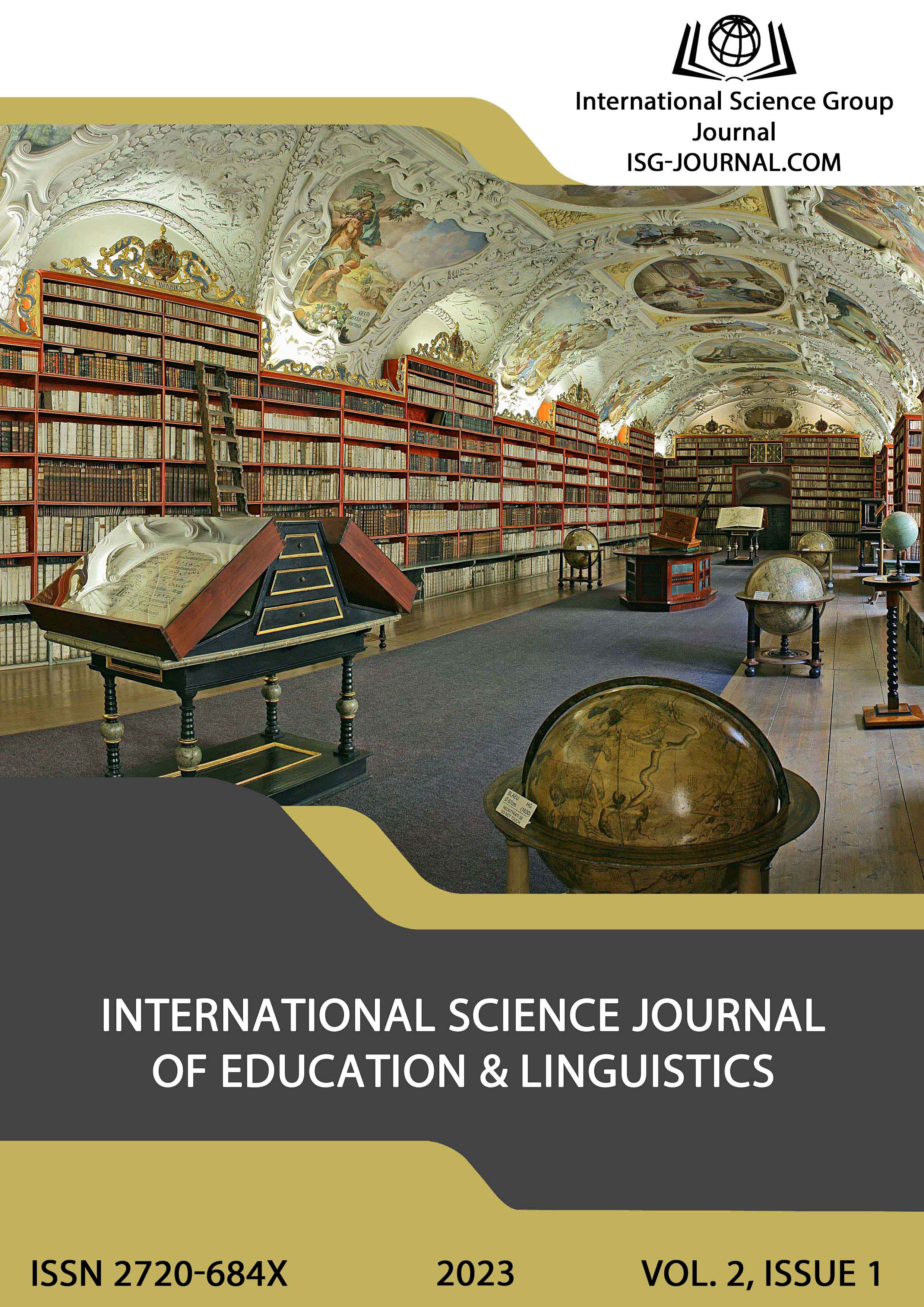The practice of blended learning in teaching a foreign language in universities in the United Kingdom of Great Britain and Northern Ireland
DOI:
https://doi.org/10.46299/j.isjel.20230201.09Keywords:
Blended learning, Online learning, Distance learning, Flipped classroom, Foreign languages, Zoom, Google Classroom, TeamsAbstract
The article presents the practice of blended learning in teaching a foreign language in higher education institutions in Great Britain. The urgency of studying the issue of introducing mixed learning into the work of educational institutions, especially during wartime, was emphasized, which is why they turned to the successful experience of its implementation in the universities of the United Kingdom. It is noted that the Student digital experience insights survey 2021/22 conducted by Jisc (the UK digital, data and technology agency focused on tertiary education, research and innovation) confirms that most students prefer a blended learning approach over face-to-face learning. It is emphasized that most universities use online or digital learning for lectures, non-interactive online sessions and recorded sessions and face-to-face (in-person, on-campus) learning for seminars, laboratory work, practical activities, workshops, practical classes, individual classes and work in small groups. The blended learning models they use in their practice are described in the example of three universities (Arden, Northampton and Southampton). It was found that teachers use the following platforms: Zoom, Google Meet and Teams when teaching foreign languages online and Google classroom when teaching face-to-face. It is emphasized that approaches to learning and teaching should be kept in focus, which should enable scholars to identify where learners are struggling with online content or falling behind so that their learning needs can be met; communicating with students to identify and remove barriers to attendance and work; working with students and student unions to create tools (including surveys, focus groups, reference groups) for students to evaluate their blended learning experiences; online feedback that is timely and of the same high quality that students expect from face-to-face learning; clear detailed information about how the course will be conducted; support in the development of skills necessary for effective online learning.
References
Закон України від 24 лютого 2022 року No 2102-IX «Про затвердження Указу Президента України «Про введення воєнного стану в Україні». URL:https://zakon.rada.gov.ua/laws/show/2102-IX#Text.
Навчання під час війни: як в Україні працюватимуть Вузи і школи. Даріна Лісюченко. URL: https://klymenko-time.com/uk/novosti/ucheba-vo-vremya-vojny-kak-v-ukraine-budut-rabotat-vuzy-i-shkoly/
Змішане навчання: як організувати якісний освітній процес в умовах війни URL:https://sqe.gov.ua/zmishane-navchannya-yak-organizuvati-yaki/
МКІП працює над проєктом закону про особливий статус англійської мови в Україні. URL: https://mkip.gov.ua/news/7518.html
Свиридюк О. (2021). Зміст змішаного навчання у закладах вищої освіти. Збірник наукових праць Уманського державного педагогічного університету, 4, 120–128. doi:
Рекомендації щодо впровадження змішаного навчання у закладах фахової передвищої та вищої освіти. URL: https://mon.gov.ua/storage/app/media/vishcha-osvita/2020/zmyshene%20navchanny/zmishanenavchannia-bookletspreads-2.pdf
Akbarov, A., Gönen, K., & Aydoğan, H. (2018). Students' attitudes toward blended learning in EFL context. Acta Didactica Napocensia, 11(1), 61–68. doi:10.24193/adn.11.1.5.
Banditvilai, C. (2016). Enhancing Students' Language Skills through Blended Learning. Electronic Journal of e-Learning, 14(3), 220–229.
Ghazizadeh, T., & Fatemipour, H. (2017). The effect of blended learning on EFL learners’ reading proficiency. Journal of Language Teaching and Research, 8(3), 606–614. doi:10.17507/jltr.0803.21.
Liu, M. (2013). Blended Learning in a University EFL Writing Course: Description and Evaluation. Journal of Language Teaching & Research, 4(2), 301–309. doi:10.4304/jltr.4.2.301-309.
Zhang, W., & Zhu, C. (2018). Comparing learning outcomes of blended learning and traditional face-to-face learning of university students in ESL courses. International Journal on E-Learning, 17(2), 251–273.
Форостюк, І. В. (2021). Викладання іноземної мови у вищій школі в умовах дистанційного та змішаного навчання. Актуальні питання гуманітарних наук, 35(6), 227–232.
Желуденко, М. А. та Сабітова, А. (2018). Змішане навчання як оптимальна та ефективна форма сучасної освіти. Вісник національного авіаційного університету, 12, 38–43.
Безлюдний, О., Безлюдна, В., Щербань, І., Комар, О. (2019). Досвід використання змішаного навчання на заняттях з англійської мови у закладах вищої педагогічної освіти. Інформаційні технології і засоби навчання, 73(5), 86–100.
Олейнікова, Г. (2022). Особливості викладання іноземної мови у форматі змішаного навчання. Науковий вісник Ізмаїльського державного гуманітарного університету, 58, 109–119.
University Responses to Covid-19. URL: https://www.studentcrowd.com/article/university-responses-to-covid-19
Student digital experience insights survey 2021/22 URL: https://repository.jisc.ac.uk/8850/1/2022-07%20%28iDFltdP024.11%29%20DEI%20HE%20%26%20FE%20Reports%202022%20%28HE%29%20v1-05.pdf
Downloads
Published
How to Cite
Issue
Section
License
Copyright (c) 2023 Віта Безлюдна, Ольга Свиридюк

This work is licensed under a Creative Commons Attribution 4.0 International License.





